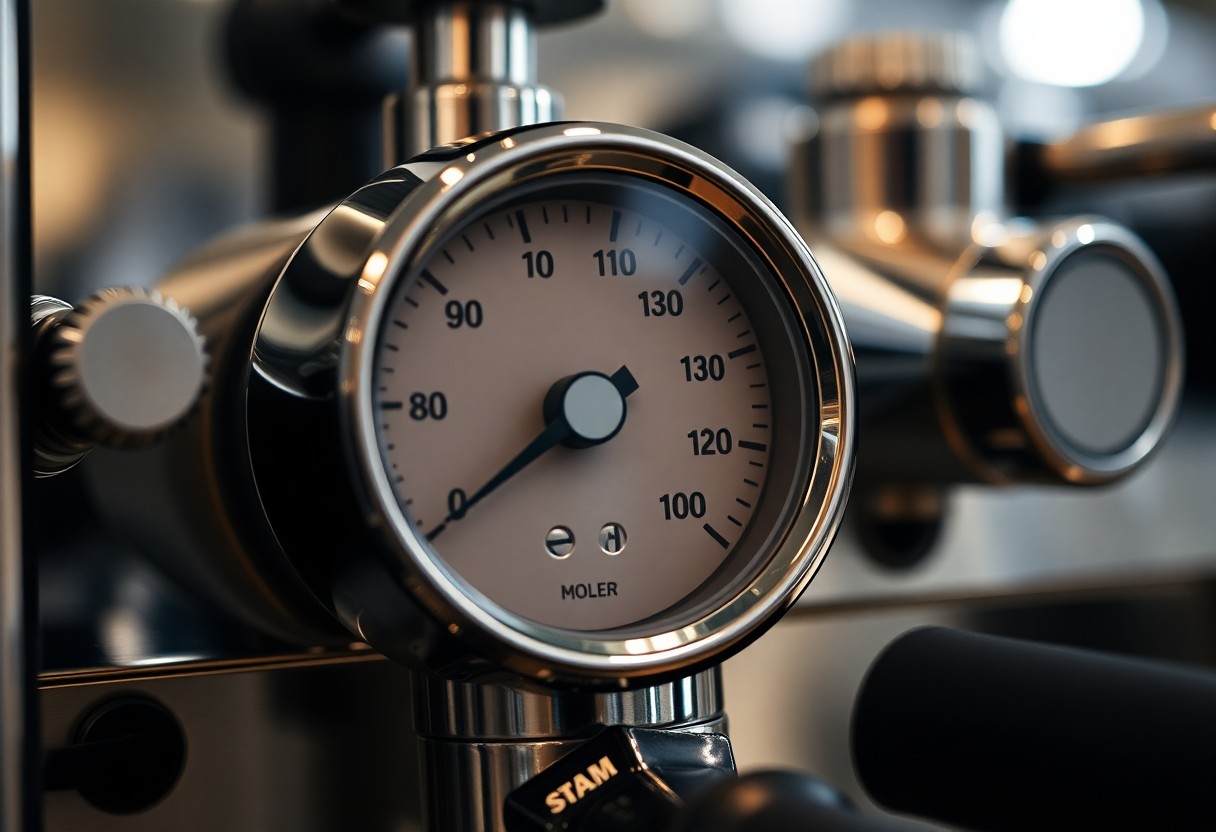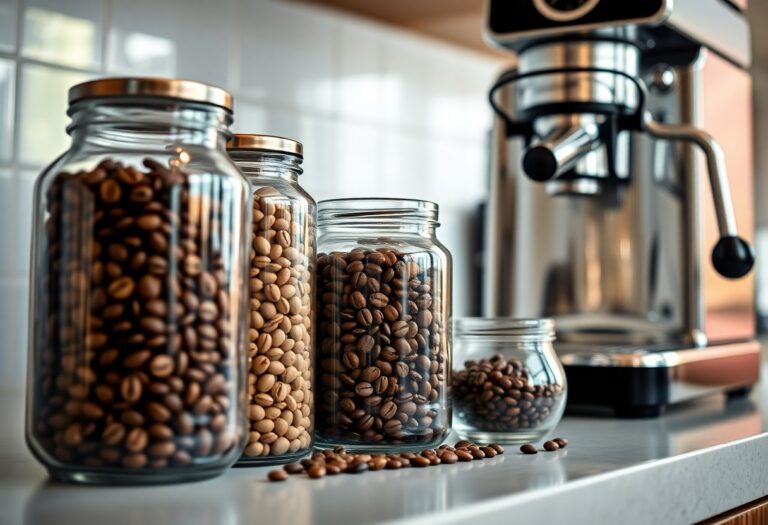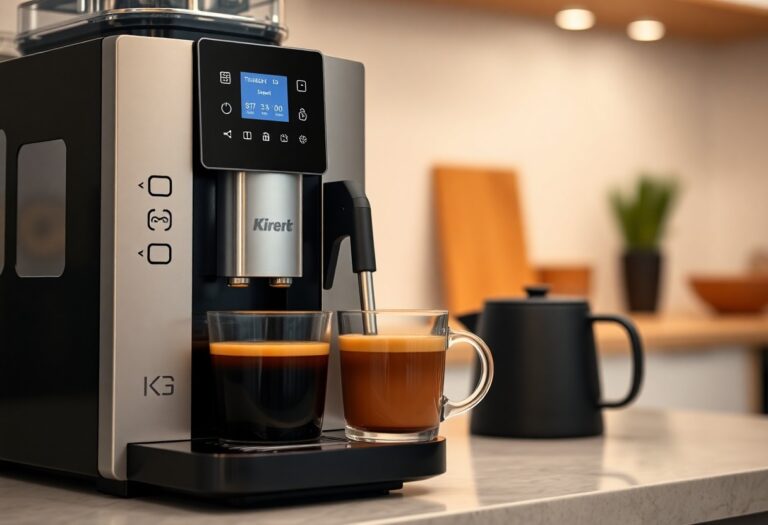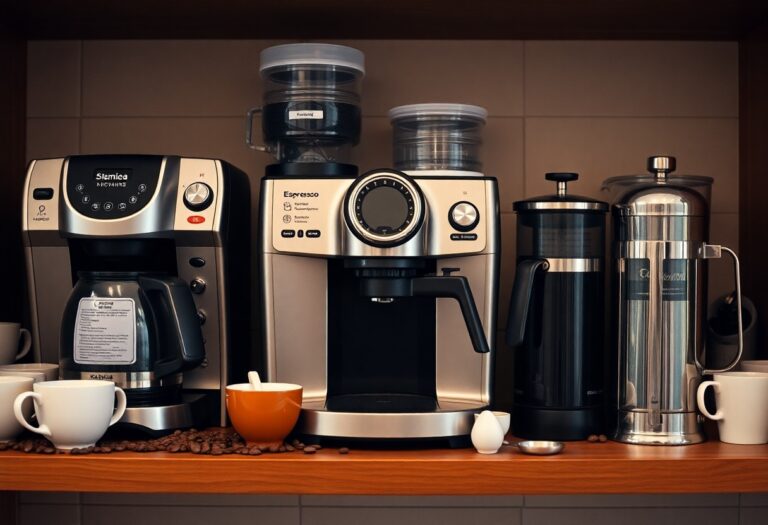What is Bar in a Coffee Machine – Pressure Measurement
Many coffee enthusiasts often wonder about the significance of bar pressure in their coffee machines. Understanding this pressure measurement is imperative for brewing the perfect cup, as it directly affects the extraction of flavors from your coffee grounds. Typically, espresso machines operate around 9 bars of pressure, which you’ll find is vital for achieving that rich, creamy crema. If you’re curious about how different pressure levels impact your brew, check out this informative discussion on what is a pump pressure bar? From 19 to 15 makes a huge …
Key Takeaways:
- The term ‘bar’ refers to a unit of pressure commonly used to measure the brewing pressure in coffee machines.
- 1 bar is approximately equal to atmospheric pressure at sea level, which is 14.5 psi (pounds per square inch).
- Espresso machines typically operate between 9 to 15 bars of pressure to extract coffee efficiently.
- Higher pressure can lead to over-extraction, while lower pressure might result in under-extraction, affecting flavor.
- Understanding the bar measurement can help users optimize their coffee making process for better taste and consistency.
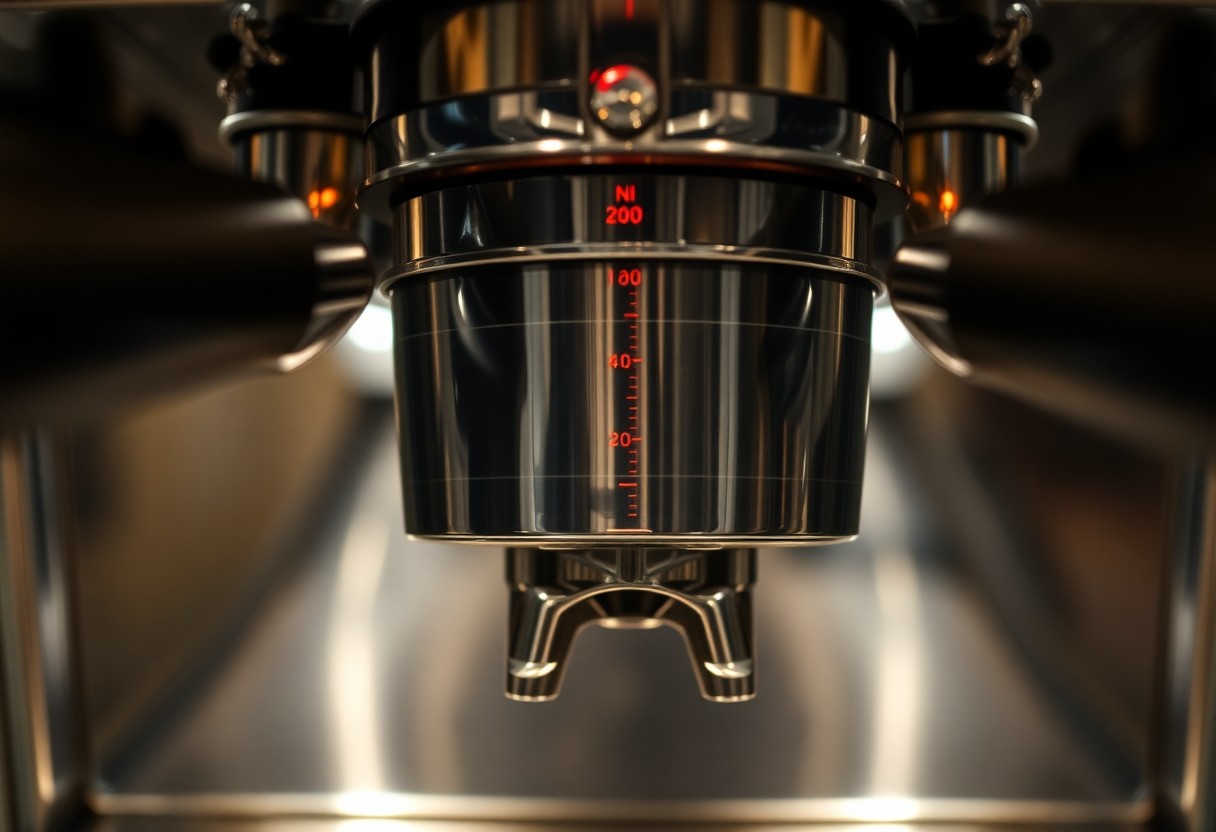
The Importance of Pressure in Espresso Extraction
Every espresso shot relies on precise pressure to deliver the rich and complex flavors that coffee aficionados cherish. Generally, maintaining a brewing pressure of around 9 bar ensures optimal extraction of oils and solubles from the coffee grounds, translating to a balanced shot with good crema. Deviating from this ideal can lead to under-extraction, resulting in a sour flavor, or over-extraction, causing bitterness. Thus, understanding and controlling pressure is fundamental for achieving the perfect cup of espresso.
The Role of Pressure in Flavor Development
Pressure significantly influences the extraction of coffee flavors during brewing. As water is forced through the coffee grounds at high pressure, it extracts important oils, sugars, and acids that create a full-bodied taste. The right pressure helps unlock the caramelized and chocolatey notes in darker roasts, while also accentuating the fruity and floral characteristics in lighter varieties. Essentially, pressure acts as a key to unlock a range of flavors, allowing you to explore the unique profiles of different beans.
Balancing Pressure for Optimal Results
Achieving balance in pressure is vital for drawing out the full potential of your coffee. A pressure that’s too low might result in a watery shot, while excessive pressure can over-extract flavors, leading to an unpleasant taste. Aiming for that sweet spot around 9 bar can enhance both consistency and depth in your espresso. Regularly calibrating your machine and adjusting your grind size can help maintain this balance, ensuring each extraction brings out the best in your coffee.
To fine-tune your pressure, consider experimenting with various grind sizes and tamping techniques. For instance, a finer grind requires more pressure to push the water through, while a coarser grind reduces resistance. If you find your shots tasting too bitter, try a slightly coarser grind or reduce the tamping force. Similarly, if you’re tasting sourness, a finer grind or increased tamping might be necessary. Keep in mind that every coffee bean and roast type can interact differently with pressure, so being hands-on and adjusting your methods will lead to personalized espresso excellence.
Decoding the Bar Measurement
The term ‘bar’ in coffee machines refers to a unit of pressure measurement that is integral to the brewing process. Specifically, one bar is equivalent to the atmospheric pressure at sea level, around 14.5 psi (pounds per square inch). Understanding this measurement helps you appreciate how pressure affects the extraction of flavors from coffee beans during brewing, as well as the overall quality of your espresso.
What Does ‘Bar’ Really Mean?
Simply put, a bar is a measurement of pressure. In coffee terms, when you see a coffee machine rated at 9 bars, it means the machine can exert nine times the standard atmospheric pressure. This high pressure is necessary to extract oils, aromatics, and flavors locked within coffee grounds effectively, leading to that rich, full-bodied espresso you desire.
How Pressure Impacts Brew Time and Quality
Pressure directly affects how quickly water flows through coffee grounds. Higher pressure generates a faster brew time, usually around 25 to 30 seconds for espresso, whereas lower pressure can lead to under-extraction, resulting in sour or weak flavors. A balance exists; too much pressure can overpower delicate coffee notes, while too little fails to extract the desired characteristics.
Let’s explore further how pressure shapes your coffee experience. Typically, espresso machines operate at around 9 bars, providing an ideal balance for extracting flavors efficiently. If you push the pressure to 15 bars or more, you might achieve a quick brew, but it can compromise the coffee’s depth, leading to a more bitter or unbalanced shot. Conversely, low pressure, such as 5 bars, often means an increased brew time, soggy grounds, and ultimately an underwhelming cup. Finding that sweet spot is necessary for achieving a perfect balance of flavor, aroma, and body in your coffee. Understanding this interaction will significantly enhance your brewing skills and enjoyment of espresso.
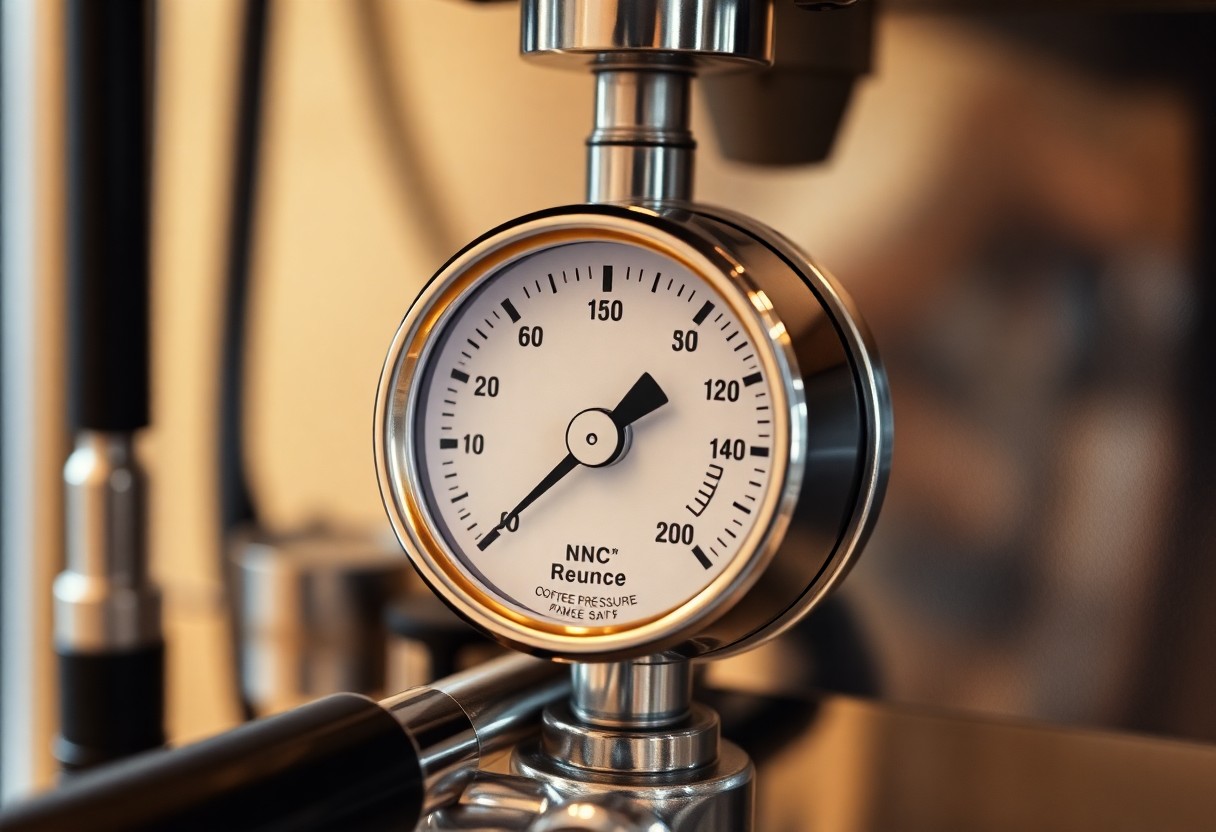
The Mechanics: How Coffee Machines Generate Pressure
Understanding the mechanics behind coffee machines unveils how they generate the necessary pressure for extracting a perfect brew. Coffee machines utilize water heated to an optimal temperature, which is then forced through packed coffee grounds at a specific pressure. This pressure facilitates the extraction of flavors and oils, creating the rich taste and aroma you expect in your cup. When this process happens at around 9 bars of pressure, you’re likely to achieve that signature espresso shot you crave.
Inside the Coffee Machine: Components at Work
Inside your coffee machine, several key components collaborate to create that perfect cup. The pump is the heart of this system, exerting pressure on the heated water. Additionally, the boiler heats the water to the desired temperature, while the brew group holds the coffee grounds in place during extraction. Together, these components work harmoniously, ensuring that everything from water temperature to pressure is meticulously controlled to enhance your coffee experience.
Understanding Pump Types and Their Impact on Pressure
Different pump types significantly affect the pressure generated within your coffee machine. The most common pump types include rotary and vibratory pumps; rotary pumps are known to provide consistent pressure, while vibratory pumps are more common in lower-end machines due to their compact size. In contrast, high-end machines often incorporate rotary pumps for enhanced performance. Each design impacts extraction and can determine the overall quality of your coffee, making it vital to choose a machine based on your brewing preferences.
| Pump Type | Description |
| Rotary Pump | Offers consistent and precise pressure, ideal for high-end machines. |
| Vibratory Pump | Typically found in lower-end machines, known for portability. |
| Dual Pump | Allows separate pressure settings for brewing and steaming. |
| Hand-Pumped | Manual control of pressure; favored by some espresso enthusiasts. |
| Piston Pump | Mechanically or electrically driven, offers manual pressure control. |
The type of pump you choose can significantly influence your coffee outcomes. A rotary pump not only provides stability but can also handle larger volumes, making it suitable for busy households or professional environments. On the other hand, a vibratory pump is typically less expensive and compact, appealing for casual coffee drinkers. Understanding these options allows you to make a more informed decision based on your specific brewing style and taste preferences. This guide will enable you to appreciate how small differences in pump mechanics can lead to vastly different tasting experiences.
| Pump Type | Brewing Performance |
| Rotary Pump | Excellent stability, ideal brewing consistency. |
| Vibratory Pump | Good for home machines, may fluctuate pressure slightly. |
| Dual Pump | Allows greater flexibility with different brewing techniques. |
| Hand-Pumped | Offers full control over pressure, resulting in unique brews. |
| Piston Pump | A blend of mechanical and electrical pressure control. |
- Pressure Generation drives flavor extraction.
- Pump Variability affects brewing quality.
- Component Collaboration ensures optimal performance.
- Extraction Process relies on precise pressure settings.
- Informed Decisions lead to better coffee experiences.
This comprehensive understanding of machine mechanics will empower your coffee-making journey, ensuring each cup emerges exquisitely rich in flavor and aroma.
Troubleshooting Pressure Issues in Coffee Machines
Pressure inconsistencies in your coffee machine can ruin the brewing experience and lead to subpar coffee. Identifying and addressing these issues quickly is key to achieving that perfect shot. Start by assessing the machine’s components and functionality to pinpoint what might be causing these problems.
Common Problems Leading to Pressure Fluctuations
Several factors can create pressure fluctuations, including blocked coffee grounds, scale buildup in the machine, and incorrect grind size. A clogged portafilter or insufficient tamping can restrict water flow, affecting pressure levels. Additionally, a malfunctioning pump or leaks in the machine can drastically impact consistent pressure.
Solutions for Maintaining Consistent Pressure
Ensuring consistent pressure involves regular maintenance and adjustments. Regularly cleaning your equipment helps prevent clogs. Adjusting the grind size for the specific coffee type you’re using also plays a role. If you are experiencing persistent pressure issues, inspect the pump and seals for wear and replace them as necessary.
For maintaining consistent pressure, regularly descaling your coffee machine is necessary, especially if you use hard water. Using filtered water can help minimize mineral buildup, keeping your machine in optimal condition. Additionally, calibrating the grind size based on the coffee beans you use can lead to more stable extraction. Consider using a consistent tamping technique as well; this creates an even bed for water to flow through, optimizing pressure delivery. By integrating these practices into your routine, you can significantly enhance the quality of your coffee and ensure your machine runs smoothly.
The Future of Espresso Machines and Pressure Technology
The evolution of espresso machines will likely center around advanced pressure measurement technologies, enhancing the brewing experience. As manufacturers explore new materials and designs, they aim to achieve optimal extraction and flavor profiles, ultimately redefining coffee quality. Environmentally friendly practices and energy-efficient designs are also anticipated to play a vital role, aligning with increasing consumer demand for sustainability in every aspect of life.
Innovations Shaping Pressure Measurement
Emerging technologies in pressure measurement are paving the way for precision brewing in coffee machines. Digital pressure gauges and sensors provide real-time data, allowing users to fine-tune the brewing process to perfection. Innovations such as programmable pressure profiles enable baristas or home enthusiasts to customize their espresso shots more accurately, catering to individual taste preferences.
The Rise of Smart Coffee Machines
Smart coffee machines are revolutionizing the way you enjoy your daily brews, integrating advanced technology to enhance your coffee experience. These machines connect to mobile apps, providing you with the ability to control brewing settings remotely. You can set personalized pressure profiles, adjust extraction times, and even receive alerts when maintenance is required. Through machine learning, these coffee machines can analyze your brewing habits, adapting their performance to deliver a coffee tailored to your tastes. Imagine waking up to a perfectly brewed cup, prepared just the way you like it, without lifting a finger.
Conclusion
Presently, understanding bar pressure in your coffee machine is vital for brewing the perfect cup. It directly influences the extraction process, impacting the flavor and aroma of your coffee. Typically, a pressure range of 9 to 10 bars is ideal for espresso, ensuring optimal extraction. By paying attention to the pressure measurement, you can refine your coffee-making skills and enhance your daily brew experience, leading to a more satisfying cup each time you indulge in your favorite beverage.
FAQ
Q: What does ‘Bar’ refer to in a coffee machine?
A: In the context of coffee machines, ‘Bar’ is a unit of measurement used to indicate pressure. It reflects the amount of pressure being applied to the coffee during the brewing process. One Bar is equivalent to atmospheric pressure at sea level, which is about 14.5 psi (pounds per square inch). For standard espresso machines, a pressure of 9 bars is commonly recommended to achieve optimal extraction from the coffee grounds.
Q: Why is pressure important in coffee brewing?
A: Pressure plays a significant role in determining how well water extracts flavors and oils from coffee grounds. When pressure is applied, it forces hot water through the coffee, ensuring that the necessary oils and flavors are released effectively. If the pressure is too low, the coffee may be under-extracted, leading to a sour and weak taste. Conversely, if the pressure is too high, it can result in over-extraction, making the coffee taste bitter.
Q: How do I know what pressure my coffee machine is using?
A: Many modern coffee machines come equipped with a built-in pressure gauge that displays the current pressure in bars. For machines without a gauge, you can usually refer to the product specifications, which often indicate the maximum pressure the machine can reach. If your coffee machine includes a manual, it can provide insights into how to monitor and adjust the pressure as needed for optimal brewing results.
Q: Can I adjust the pressure on my coffee machine?
A: In some coffee machines, especially manual or semi-automatic models, you may be able to adjust the pressure by tweaking the grind size of the coffee, the tamping pressure, or by using different brew settings. However, fully automatic machines often have a fixed pressure setting that cannot be altered. It’s necessary to consult the manufacturer’s instructions for specific methods to adjust the pressure, if available.
Q: What pressure is best for brewing espresso?
A: The widely accepted standard for brewing espresso is around 9 bars of pressure. This level allows for the ideal extraction of flavors from the coffee grounds, resulting in a rich and balanced shot of espresso. Some coffee aficionados may experiment with slightly higher or lower pressures, but 9 bars is generally viewed as optimal for producing espresso with the desired crema and flavor profile.

